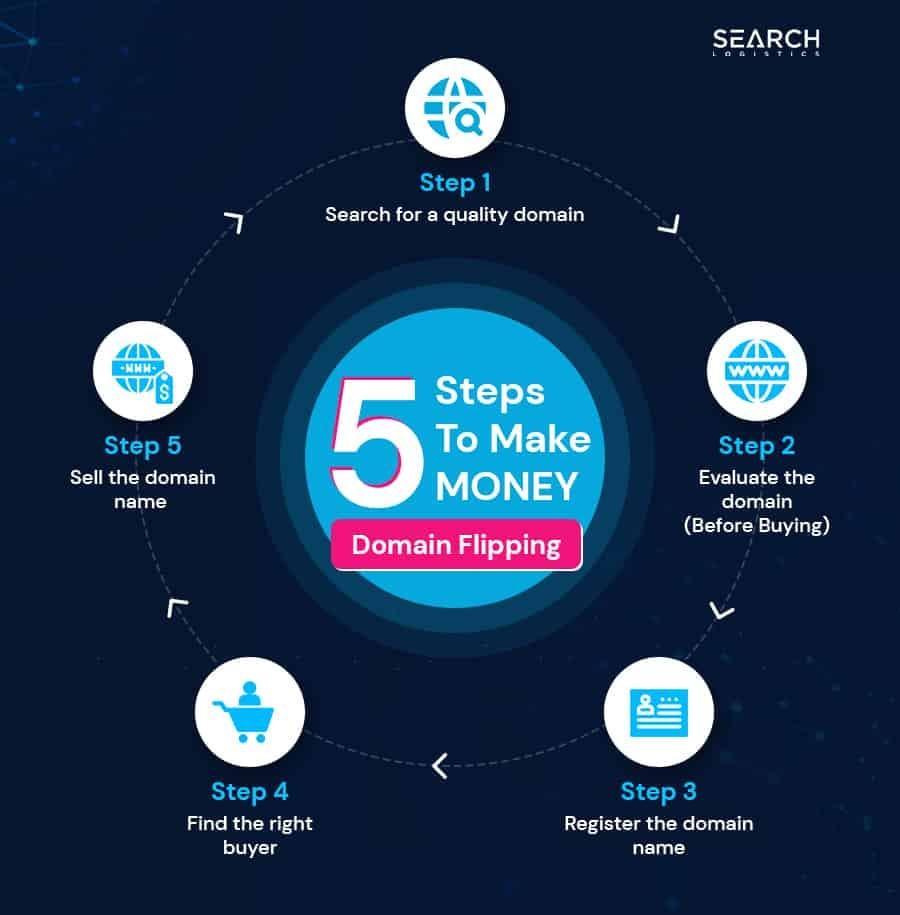Table of Contents
- Understanding the Concept of Website Flipping
- Evaluating the Potential of a Website for Flipping
- Strategies for Successfully Buying and Selling Websites
- Essential Tools and Resources for Website Flippers
- Common Mistakes to Avoid in Website Flipping
- Q&A
- Closing Remarks


Understanding the Concept of Website Flipping
Website flipping is a fascinating process where digital entrepreneurs buy, improve, and sell websites for a profit. This practice essentially transforms underperforming assets into highly valued digital properties. The key to successful flipping lies in identifying sites with growth potential, implementing strategic enhancements, and effectively marketing the final product to prospective buyers. An investor’s ability to assess the website’s current state and envision its future performance is crucial in this competitive landscape.
To effectively flip a website, one must focus on several core elements that contribute to its overall value. These include:
- Content Quality: High-quality, original content attracts visitors and improves SEO rankings.
- User Experience (UX): A well-designed, easy-to-navigate site enhances user satisfaction and encourages return visits.
- Monetization Methods: Implementing solid revenue streams, such as affiliate marketing, sponsored content, or e-commerce, significantly boosts a website’s appeal.
The timeline for a successful website flip can vary widely depending on the market and the investor’s strategies. Typically, the process involves three stages: acquisition, enhancement, and sale. Here’s a brief overview:
| Stage | Description |
|---|---|
| Acquisition | Purchase a website with potential for growth. |
| Enhancement | Improve content, design, and monetization options. |
| Sale | Market the improved website to attract buyers. |
By comprehensively understanding the intricacies of website flipping, investors can tap into this lucrative market, maximizing their returns and successfully navigating the digital economy.


Evaluating the Potential of a Website for Flipping
When considering a website for flipping, it’s crucial to analyze its potential for generating revenue. Look into current traffic statistics, as high visitor numbers usually suggest a more valuable asset. Use tools like Google Analytics and SEMrush to assess organic traffic trends, bounce rates, and audience demographics. A site that consistently attracts visitors implies that it has substance, which is attractive to prospective buyers.
Additionally, evaluating the monetization methods employed on the website can reveal how much profit it currently generates. Websites can earn through various avenues, such as:
- Advertising revenue: This includes Google AdSense or affiliate marketing partnerships.
- Product sales: For e-commerce sites, review the sales conversion rates and total revenue.
- Subscription models: Membership or exclusive content access can create steady income.
Lastly, the site’s overall content quality and niche market play significant roles in its potential value. A website with compelling, well-optimized content in a thriving niche is more likely to attract buyers. Consider creating a table to summarize the key features assessed during evaluation:
| Feature | Assessment |
|---|---|
| Visitor Traffic | High / Medium / Low |
| Revenue Streams | Multiple / Few / None |
| Content Quality | High / Average / Low |
| Niche Viability | High Potential / Moderate / Saturated |


Strategies for Successfully Buying and Selling Websites
Successfully buying and selling websites requires a strategic approach that combines research, valuation, and negotiation skills. Start by conducting thorough research on the website’s niche, traffic sources, and revenue streams. Utilize tools like Google Analytics and Ahrefs to analyze performance metrics. Understanding the website’s audience demographics allows you to spot potential areas for growth or optimization.
Next, it’s crucial to assess the value of the website based on multiple factors, including domain authority, backlinks, and content quality. Consider creating a simple valuation table to summarize your findings:
| Factor | Importance | Rating (1-5) |
|---|---|---|
| Domain Authority | High | 4 |
| Traffic Volume | High | 5 |
| Content Quality | Medium | 4 |
| Revenue History | High | 5 |
when it comes to the selling phase, create an attractive sales pitch that highlights the website’s strengths. Address potential concerns proactively by providing clear insights into financials, traffic trends, and growth potential. Utilize effective marketing strategies, such as listing on popular marketplace platforms and leveraging social media to reach a wider audience. Provide detailed and engaging content to potential buyers, emphasizing the benefits of acquiring the site while making the process as seamless as possible.
Essential Tools and Resources for Website Flippers
When diving into the world of buying and selling websites, having the right tools and resources can make all the difference in your success. First and foremost, reliable website valuation tools are crucial for assessing the worth of a site before you make a purchase. Platforms like Flippa and Empire Flippers provide comprehensive listings and valuations that help you gauge market trends and set realistic budgets. Additionally, utilizing Google Analytics and SEMrush will allow you to analyze traffic data and performance metrics, ensuring you make informed decisions.
Another essential category of resources includes hosting providers and domain registrars. Opting for reputable companies like Bluehost or SiteGround not only ensures reliable performance but also provides excellent customer support, which can be invaluable when transitioning ownership. Furthermore, consider investing in domain aftermarket services such as GoDaddy Auctions or NameJet to scout opportunities for acquiring high-value domains that can be flipped for profit.
Lastly, staying informed is vital; thus, engaging with online communities and forums dedicated to website flipping can provide insights that tools alone cannot offer. Joining groups on platforms like Facebook or Reddit can connect you with fellow flippers, who often share their experiences, tips, and even pitfalls to avoid. You might also explore subscription services that offer in-depth analyses of market trends, ensuring you remain ahead of the curve in this dynamic landscape.


Common Mistakes to Avoid in Website Flipping
Website flipping can be a lucrative endeavor, but it’s essential to approach it with caution. One of the most common pitfalls is failing to conduct thorough research on the website’s history and potential. Before diving in, ensure you investigate traffic sources, revenue streams, and previous ownership. Neglecting this step could lead to overestimating a site’s value or investing in a website with hidden red flags. Tools like Google Analytics and SEMrush can offer valuable insights into a site’s performance and its past trends.
Another frequent mistake involves overlooking the importance of content quality and user experience. Simply putting a website up for sale without any enhancements can significantly diminish its resale value. Focus on optimizing the site’s design, improving load times, and ensuring mobile responsiveness. Engaging and relevant content keeps visitors on the site longer, boosting both SEO rankings and potential sale prices. A visually appealing and user-friendly website not only attracts buyers but also can lead to more impressive traffic metrics.
Lastly, many flippers underestimate the time required for effective updates and marketing. Rushing to flip a website without a proper strategy may result in a loss rather than a profit. Here are some key tasks to consider before listing your website:
| Task | Time Estimate |
|---|---|
| Website Performance Analysis | 1-2 weeks |
| Content Creation & Enhancement | 2-4 weeks |
| SEO Optimization | 1 week |
| Marketing Strategy Development | 2 weeks |
Taking the time to focus on these areas dramatically increases your chances of a successful flip, allowing you not only to maximize ROI but also to build a reputable brand within the marketplace.
Q&A
Q&A: Understanding Website Flipping
Q1: What is website flipping? A1: Website flipping is the process of buying, improving, and then selling websites for a profit. Just like real estate flipping, the goal is to enhance the website’s value by increasing traffic, optimizing for search engines, or improving content and design before selling it at a higher price.Q2: How does one start website flipping? A2: To start website flipping, first identify potential websites to buy. Look for undervalued sites with existing traffic or solid content. After purchasing, analyze areas for improvement—this could involve enhancing SEO, updating design, or increasing user engagement. Once improvements are made, list the site for sale, ideally at a price reflecting the added value.
Q3: What types of websites are best for flipping? A3: The best websites for flipping typically include blogs, e-commerce stores, or niche sites that have some existing traffic and revenue. It’s crucial to choose a site in a profitable niche or one that shows growth potential. Additionally, sites with a solid domain authority can often provide a better return on investment.
Q4: What skills do I need to become a successful website flipper? A4: Success in website flipping requires a diverse skill set. Knowledge of SEO, web design, content creation, and digital marketing is essential. Additionally, analytical skills to assess potential websites and the financial savvy to negotiate buying and selling prices are important. Being adaptable and willing to learn new skills will also greatly benefit you in this field.
Q5: How do I evaluate a website’s value before buying? A5: To evaluate a website’s value, consider factors such as its traffic statistics, revenue history, age, domain authority, and niche market potential. Tools like Google Analytics and Ahrefs can provide insights into traffic patterns and keyword rankings. It’s also wise to review the site’s content quality and backlink profile as they significantly influence its long-term viability.
Q6: What can affect the resale value of a flipped website? A6: Several factors can affect the resale value of a flipped website, including the overall growth of its traffic, the quality of content, the effectiveness of SEO efforts, and changes in market trends. Additionally, a well-maintained site with strong branding will generally command a higher price. Therefore, the improvements you implement directly impact the potential resale value.
Q7: Are there any risks associated with website flipping? A7: Yes, like any investment, there are risks involved in website flipping. Market trends can shift, impacting demand for certain niches. Additionally, unexpected costs, such as server issues or the need for extensive redesigns, can eat into your profits. It’s essential to conduct due diligence before purchasing a site to mitigate these risks.
Q8: What resources can help someone learn more about website flipping? A8: There are many resources available for those interested in learning more about website flipping. Online courses, blogs, and forums dedicated to digital entrepreneurship can provide valuable insights. Websites like Flippa, Empire Flippers, and various YouTube channels also offer guides, tips, and case studies that can prove beneficial.
Q9: Can beginners succeed in website flipping? A9: Absolutely! While beginners may face a learning curve, with research, practice, and perhaps guidance from experienced flippers, they can certainly succeed. Starting small, being patient, and continuously expanding knowledge can lead to profitable outcomes in the website flipping game.
Through this Q&A, we hope to shed light on website flipping, making it accessible for both seasoned investors and newcomers eager to dive into the world of online entrepreneurship.

